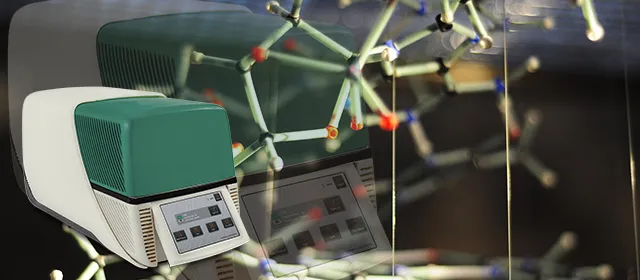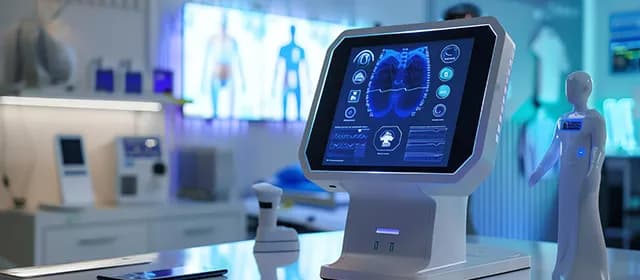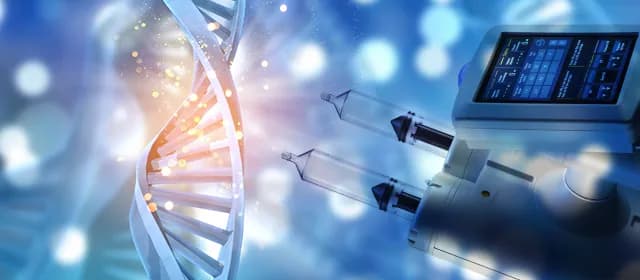Quantitative Polymerase Chain Reaction (qPCR) occupies a pivotal role in molecular diagnostics. Its capacity to quantify nucleic acids in real time supports precision in interpreting gene expression, pathogen load, and molecular biomarkers. Personalized medicine, which tailors treatment according to individual genomic profiles, increasingly depends on tools that provide high sensitivity, reproducibility, and throughput. This blog explores how qPCR continues to evolve in the context of precision medicine, its strengths and limitations, integration with complementary technologies, regulatory and standardization issues, and anticipated future directions.
Kings Research estimates that the global real time polymerase chain reaction systems market size was valued at USD 4.93 billion in 2022 and is projected to reach USD 7.01 billion by 2030, growing at a CAGR of 4.57% from 2023 to 2030.
How qPCR Measures Nucleic Acids with High Precision
qPCR, also referred to as real-time PCR, amplifies target DNA sequences while monitoring fluorescence signals in each cycle. This allows the determination of nucleic acid quantity during the exponential phase rather than at reaction end. The method uses fluorescent dyes or sequence-specific probes to measure amplified products. The Minimum Information for Publication of Quantitative Real-Time PCR Experiments (MIQE) guidelines establish best practices for reporting, including transparency in assay design and controls. Recent analyses reveal ongoing deficiencies in reporting transparency and experimental validation in qPCR studies.
Key performance metrics include limit of detection, dynamic range, amplification efficiency, specificity, and reproducibility. qPCR achieves high accuracy when proper controls, standards, and normalization strategies are applied. It remains faster and less complex than next-generation sequencing (NGS) in many diagnostic settings, particularly when targeting defined genes or panels. Comparative reviews note that PCR and qPCR retain roles in clinical diagnostics because of their simplicity, sensitivity, and specificity.
Applications of qPCR in Precision and Personalized Medicine
Personalized medicine relies on identifying molecular biomarkers that stratify patients, guide therapy choice, or monitor response. qPCR assays are widely used to measure gene expression signatures, quantify viral or bacterial loads, assess minimal residual disease in cancer, and detect copy number variations or mutations when appropriately designed. Clinical oncology labs still employ qPCR methods to assess transcripts or fusion genes in hematologic malignancies and solid tumors.
Pharmacogenomic profiling sometimes requires qPCR detection of single-nucleotide polymorphisms or allele-specific expression. This approach supports optimized drug choice and dosing. Laboratories offering multi-omics analyses have augmented their capabilities by adding qPCR services. For instance, Aliri Bioanalysis announced expansion into qPCR to complement its existing multi-omics platform, deploying QuantStudio 7 Pro instrumentation to support gene expression assays from liquid biopsies and FFPE tissues.
qPCR also contributes to cell and gene therapy monitoring. The technique quantifies vector copy number, transgene expression, and persistence of administered cells. In gene therapy trials, regulators require qPCR assays for safety and efficacy monitoring. qPCR’s rapid turnaround makes it suitable for longitudinal monitoring in clinical protocols. Emerging cancer biomarker research uses qPCR in conjunction with digital PCR (dPCR), where qPCR serves as a screening or validation tool before moving to more precise quantification modalities.
Technological Advances and Innovations
Reagent and chemistry innovations continue to enhance qPCR robustness. PCR Biosystems released inhibitor-tolerant qPCR mix formulations optimized for challenging sample types such as saliva or whole blood. These chemistries increase resilience to inhibitors, improve sensitivity, and reduce preprocessing requirements.
Platform automation and throughput have improved. Laboratories increasingly adopt multiplexing, microfluidic qPCR arrays, and robotic sample handling to scale throughput. Integration with laboratory information management systems (LIMS) streamlines sample tracking, data capture, and reporting workflows.
Analytical software also evolves. Solutions such as GenEx specialize in preprocessing, normalization, and visualization of qPCR and dPCR data. The software supports compliance with regulatory standards and simplifies interpretation in multi-gene experiments.
Efforts to improve baseline correction, signal noise reduction, and amplification curve fitting continue. Methods such as optimized baseline subtraction algorithms can increase sensitivity and reduce false negative rates, particularly in later amplification cycles (Source: arxiv.org).
Interpretable digital PCR methods incorporate machine learning and explainability frameworks. One example is I2ddPCR, which synergizes front-end predictive models and language model components to automate droplet classification and provide human-readable interpretations in complex ddPCR assays. This blend of computational methods may influence future qPCR/dPCR hybrid pipelines.
Obstacles that Limit qPCR Accuracy and Application
qPCR faces inherent limitations in precision relative to digital PCR. It relies on standard curves and relative quantification, making absolute quantification more error-prone. For low-abundance targets or small fold changes in expression, qPCR may lack the resolution of dPCR. The digital PCR approach partitions samples into many microreactions, enabling absolute quantification without calibration curves.
Assay design, primer specificity, secondary structure, and amplification biases demand rigorous optimization. Poor experimental design or inadequate validation undermines result reliability. The MIQE 2.0 critique highlights the need for improved transparency, validation, and standardization across studies.
Sample quality and inhibitors in clinical specimens pose additional challenges. Biological matrices may contain substances that interfere with amplification. Inhibitor-resistant chemistries mitigate some issues, but assay robustness must be validated across relevant specimen types. Multiplexing is limited by the spectral overlap of probes or dyes. Managing cross-reactivity and signal cross-talk complicates high multiplex panels. This constraint can limit the scale of gene panels in routine qPCR clinical assays.
Regulatory and standardization requirements for clinical use demand assay validation, calibration traceability, and auditability. Clinical labs must adopt rigorous quality control, proficiency testing, and documentation to meet certification standards.
Integration of qPCR data with high-dimensional omics data (transcriptomics, genomics, proteomics) remains complex. Harmonizing normalized expression, variant calls, and clinical metadata requires robust bioinformatics pipelines for consistent interpretation.
How Standards and Regulations Ensure Reliable qPCR Results
Clinical laboratories must follow regulatory frameworks like CLIA, ISO 15189, or equivalent national standards. qPCR assays intended for diagnostics require validation for accuracy, precision, linearity, specificity, and limits of detection. Laboratories may also require accreditation or proficiency testing programs covering molecular assays.
Standard reference materials and calibration standards help ensure assay traceability and interlaboratory consistency. Adoption of MIQE guidelines supports transparent reporting, reproducibility, and peer review. Researchers and clinical scientists must document primer sequences, reaction efficiencies, and normalization strategies to support rigorous interpretation.
Manufacturers and service labs highlight accreditation milestones. For instance, TATAA Biocenter achieved GLP accreditation for both qPCR and dPCR workflows in April 2024, reinforcing its capability to support regulated molecular bioanalysis and drug development.
Development of interlaboratory ring trials and external quality assessment schemes strengthens confidence in qPCR results across institutions.
Integrating qPCR with Sequencing, Digital PCR, and Multi-Omics Platforms
Precision medicine typically draws on multiple molecular modalities. NGS offers deep coverage and discovery potential across entire genomes or transcriptomes, albeit at higher cost and longer turnaround times. qPCR supports focused, rapid, lower-cost assays when specific biomarkers or gene panels are known. Reviews of molecular diagnostics emphasize how qPCR retains utility alongside NGS and CRISPR-based assays.
Digital PCR provides absolute quantification and higher precision in detecting rare variants or small expression changes. Clinical workflows may adopt qPCR for preliminary screening and then confirm ambiguous findings via dPCR. Multiplex qPCR can filter candidates before deeper sequencing or molecular profiling.
Emerging spatial transcriptomics and multiplexed in situ methods integrate gene expression with tissue context. While these techniques rely primarily on sequencing or imaging, qPCR may serve validation roles when extracting localized regions or microdissected samples.
CRISPR-based diagnostics propose rapid, point-of-care nucleic acid detection. Their integration into clinical pipelines may shift some diagnostic burdens. However, qPCR remains established, validated, and scalable for centralized lab settings.
How Companies Are Innovating and Deploying qPCR in Clinical Settings
Companies continue to expand offerings around qPCR. GT Molecular announced new assays for the Applied Biosystems QuantStudio Absolute Q digital PCR system, bridging quantitative PCR and digital workflows.
SeqOnce Biosciences extended its pathogen assay suite through the inclusion of an RT-qPCR measles panel, illustrating continued emphasis on pathogen quantification in clinical research settings. Bio-Rad broadened its digital PCR portfolio with the launch of the QX Continuum and QX700 series while maintaining qPCR-like workflows, signifying a strategy to unify quantitative and digital capabilities. (Source: investors.bio-rad.com)
These moves underscore market recognition that qPCR remains a central pillar in molecular diagnostics while evolving toward integration with digital approaches.
Future Directions
Efforts to improve qPCR sensitivity, precision, and multiplexing will continue. Novel chemistries, polymerases, and probe designs may extend dynamic range and lower detection thresholds. Integration of nanotechnology and optical advances could enhance signal fidelity.
Real-time digital PCR (rdPCR) is an emerging hybrid approach combining real-time detection with partitioned absolute quantification. This methodology aims to merge the strengths of qPCR and dPCR, potentially overcoming some limitations of both.
Artificial intelligence and machine learning may increasingly assist in curve fitting, baseline correction, outlier detection, and assay quality checking. These tools may reduce human error and increase throughput. Integration into multi-omics platforms, clinical decision support systems, and personalized therapy pipelines will increasingly demand seamless interfaces, standardized data formats, and interoperable software.
The advent of point-of-care qPCR systems may shift some diagnostics to decentralized settings. Portable qPCR instruments that maintain high precision could support near-patient testing in oncology, infectious disease, or pharmacogenomic contexts. Continued efforts in standardization, accreditation, and collaborative networks will bolster confidence in qPCR across institutions and regulatory regimes. Multi-institution validation of biomarker panels using qPCR can accelerate translation of precision medicine assays.
Conclusion
qPCR continues to evolve as a cornerstone methodology in personalized and precision medicine. Its balance of speed, sensitivity, and compatibility with clinical workflows makes it ideal for targeted molecular assays. Advances in reagent chemistry, assay design, automation, and analytical software enhance its robustness. Challenges remain in multiplexing, absolute quantification, and standardization. Integration with complementary modalities such as dPCR, NGS, spatial transcriptomics, and AI will shape future diagnostic ecosystems. Industry developments from firms such as PCR Biosystems, GT Molecular, SeqOnce, and Bio-Rad illustrate ongoing innovation in qPCR and adjacent technologies. As personalized medicine expands, qPCR is poised to maintain prominence in biomarker quantification, therapeutic monitoring, and patient stratification.


.webp&w=3840&q=75&dpl=dpl_56K6QShhC9wZXpDPpsYZsVak7UVB)

